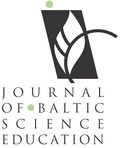| Abstract | Dear Readers and Writers!
The international scope of everything we do has exponentially increased over the last two decades. From the products we consume to the jobs we hold, and the stores in which we shop – almost all aspects of our lives have an international connection. And this is the case within science education.
Situation with science education grows problematic worldwide, and it urges in both developing and leading industrialized countries. E.g., recent (2006) scores from the Program for International Student Assessment (PISA) illustrate it well: the test administered to students in 30 industrialized countries revealed that U.S. students continue to fall behind their peers in math and science. Students from Hong Kong followed Finland’s 15-year-old and Canada performed the best on the science portion of the test. Students in Finland, Taiwan, South Korea, Canada, and Hong Kong were the best performers in Math.
What is the key reason for it? Sciences being hard to master or not "in fashion" today, widely spread humanities-over-sciences references, boring content of science textbooks or out-of-date underpinning pedagogical theory? Whatever it maybe, U.S. science teachers will have to learn much from colleagues in other countries about both their culture and their successful teaching practices. In turn, science educators from other countries can learn much from American science teachers. This will allow us all to better serve the diverse students we teach: students today are more likely to be from other countries and speak other languages.
Science teachers should increase their participation in diverse types of international activities because they are critical to the future of science education. A critical component of international efforts will be partnerships of teacher organizations. International collaboration today is marked with Internet networking, online teaching, Web 2.0, and open source movement. Science education will benefit from powerful means of visualization (see Periodic Table of Visualization Methods on the Internet) and immersive multi-user 3D environments. Go to Second Life, and you will find ”Chemical Philosophers”, “Geographic Society in Cyberspace”, “Teen educators in SL”, “American Chemical Society”, “Science School”, “Chemistry and Computers”, “Science Park”, “Physics Education” and many others whose concern is science education. That is why University of Oregon Center for Advanced Technology in Education / Center for Global Teaching is interested in implementation of international projects focused on science education like Salamander and Chemistry Hall of Fame in Second Life.
Real and virtual worlds seem to be big and hardly ever compatible. But actually they are pretty close and do not have precise borders. In a magic way, UO CATE in EduIsland is a neighbor of ARiSEnet Teachers Group, which comprises mostly secondary school teachers interested or experienced in teaching students of diversity. Presented in JBSE issue No.1 (2007), ARiSE is a joint European project (another project from ARiSEnet), and their SL group collaborates as a team as well as with the other educator communities in defining pedagogy pertaining to 3D instruction particularly in the math and sciences /http://www.arise-project.org/.
In this way, Journal of Baltic Science Education, whose topics in this issue include Physics, Chemistry, Biology, Cognitive Science, truly serves as a bridge between European and U.S. educators as well as between real and virtual worlds. Long live this reliable connection and fruitful cooperation for sustainable science education!
|
